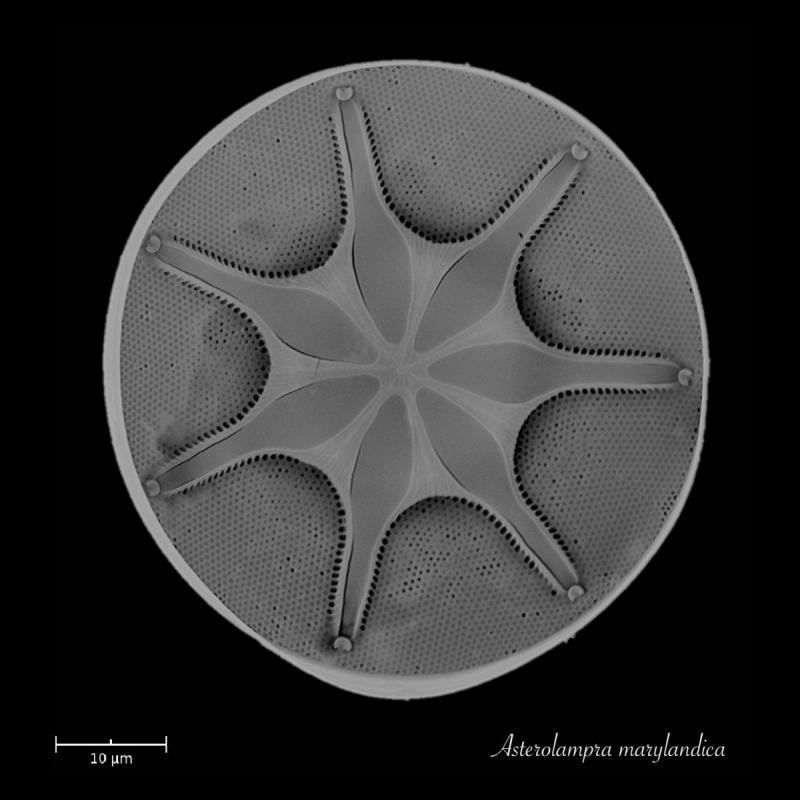How can phytoplankton diversity be studied?
Véronique Cornet is a specialist in microphytoplankton and its role in the biological carbon pump. Here she explains what phytoplankton is, how to collect it at sea and how to analyse its diversity.
Véronique Cornet and the phytonet
OCEANOGRAPHERS' INSTRUMENTS - Véronique Cornet is a research engineer at the CNRS and works at the Institut océanographique de la Méditerranée (IOM). Over the course of her career, she has taken part in 10 oceanographic campaigns in the Southern Ocean (Kerguelen Islands - Macquarie Island), the Pacific (New Caledonia - Polynesia, Solomon Islands) and the Mediterranean Sea, as well as an ice camp in the Arctic. A specialist in microphytoplankton and its role in the biological carbon pump, in this interview she describes what phytoplankton is, how to collect it at sea using the phytonet and Niskin bottles, and how to analyse its diversity using the PlanktoScope, optical microscope and scanning electron microscope (SEM).
First of all, what is phytoplankton?
The name comes from the Greek words φυτόν, meaning "plant", and πλαγκτός, meaning "wandering" or "adrift". Phytoplankton is the autotrophic component of the planktonic community and is a key component of oceanic and freshwater ecosystems. It is responsible for more than half of the world's primary production from the oceans and for the export of anthropogenic carbon to the deep ocean. It is essential to know and understand how phytoplankton function in the context of current climate change.
What will you be studying about phytoplankton during the campaign?
During the BioSWOT-Med campaign, we will be seeking to obtain information on the proportion of diatoms in the spring bloom and on the possible contribution of nanoplankton-sized diatoms. Over the course of the campaign, we will have the opportunity to take a number of cytometric and molecular biology samples in parallel for microscopic analysis. This will enable us to compare the data obtained using these different approaches.
How are phytoplankton samples collected and how are they preserved before being analysed?
During the BioSWOT-Med campaign, we will be using two sampling techniques: The first consists of using a plankton net or phytonet, with a mesh size of 20 microns: a vertical line is drawn between 200 metres from the bottom and the surface; a sub-sample of this net is observed immediately and 2 sub-samples are fixed; 1 in acid lugol and 1 in neutral formalin and kept in a cool, dark place. The depths studied will be 200 m - the "DCM" (variable depth) - and the surface. These samples will be fixed with acid lugol and neutral formalin.
How do you analyse the samples and study the diversity of phytoplankton?
A sub-sample of the phytonet will be observed live under the microscope in order to assess the community structure and acquire good quality images to feed our image databases. This sample will also be analysed using a PlanktoScope, a tabletop device that can acquire semi-continuous images of the plankton present in our sample. Compared with a microscope, this device allows us to rapidly acquire a large number of images representative of the diversity of our sample; we will then use automatic image recognition software to sort and classify them by major taxonomic groups.
Another unfixed sub-sample will be filtered for observation under a scanning electron microscope (SEM) in the laboratory. This technique magnifies the image by up to 175,000 times (a 'conventional' microscope magnifies by up to 1,000 times), enabling us to make very precise taxonomic identifications, particularly for nano diatoms that are difficult to identify using optical microscopy.
The fixed samples will be studied in the laboratory using an optical microscope: identification, counting and measurement of the biovolume of phytoplankton cells. Measuring the biovolume makes it possible to assess the carbon biomass of the cells. By combining counting, identification and measurement, we can access the structure of the community not only in terms of abundance but also the contribution of species or functional groups in terms of biomass.
The phytonet
The CTD rosette
The PlanktoScope
Nano diatom Minidiscus sp. Credit: Véronique Cornet
Asterolampra marylandica diatom. Credit: Véronique Cornet
Montage of images taken by PlanktoScope. Credits: Véronique Cornet
More information











